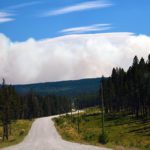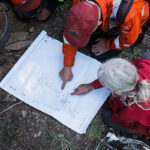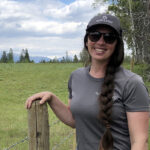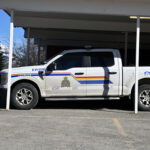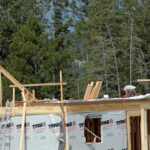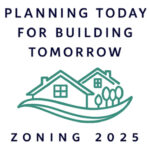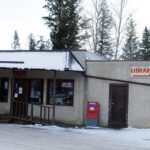Home »

Composting facility bylaw heads to second hearing
By Ian Cobb
e-KNOW
A long-awaited second public hearing dealing with a commercial composting facility application for the Mayook area will be taking place after Regional District of East Kootenay (RDEK) board directors Feb. 10 unanimously passed the first reading of zoning amendment bylaw No. 2724.
The regional board June 8 (2016) voted to defer Bylaws No. 2672 and 2673 (Hwy. 3/93 / EarthRite Industries Ltd.) following intensive discussion and presentations, including opposition from neighbouring property owners. Along with voting to defer the final reading, the board voted to rescind the third readings and return the matter to a second public hearing.
Since then, an impact assessment has been done by Vast Resource Solutions, which the board mulled over last Friday before introducing Bylaw No. 2724.
The RDEK planning department described the process up to now in a backgrounder for the board: “In December of 2015, EarthRite Industries Ltd. applied for OCP and zoning amendments for part of their property in Mayook. Their amendments included residential zone boundary adjustments to permit a subdivision for the existing house, and proposing a range of industrial uses including a compost facility, a farm and garden centre, and a tire recycling facility. In 2016, the RDEK gave the amending bylaws initial readings, a public hearing was held and third reading was given. Prior to considering the bylaw for adoption, the RDEK received new information regarding upcoming changes to the provincial legislation governing compost facilities. In July 2016, the RDEK rescinded third reading and authorized a second public hearing. This public hearing was subject to provision of additional information by the applicant from a qualified professional regarding possible impact from the proposed industrial uses on ground and surface water resources, air quality (odor) and noise.”
The VAST Resource Solutions report was summarized for the board by the RDEK planning department.
Ground and surface water resources
“The report concludes that no seeps, springs or groundwater upwellings exist on the subject site and that no connections from the subject site to surface water were identified during field investigations. It states that groundwater is located 184′ – 206′ below surface and that the property has high water retaining soils capable of holding water from any anticipated 1: 10 year storm event and that if rain in amounts exceeding expectations fall, any resulting seepage (if any) would be sufficiently diluted. The report states that two wells are located near the proposed compost facility site which could provide a conduit between surface water and ground water, and that the nearest well (Well ID# 40126) should be tested annually as a precaution. The report also recommends that compost facility operations take place on a non permeable surface and all water within the non-permeable area be collected for reuse.
“It recommends that any drainage from the non-permeable surface be directed away from the nearby wells and that water should never be allowed to pool at the well heads.”
Odor
“The report determines that there are two residential properties to the north that could be impacted by odors. It recommends that the compost facility operator be vigilant in mitigating odors by: a) maintaining a vegetated buffer along the north property boundary; b) regularly monitoring temperature and moisture to prevent odor causing conditions and by using biocovers on all piles; and, c) adhering to provincial guidelines (best management practices). Other recommendations include constructing piles in favourable wind conditions and maintaining a detailed record of odor complaints.”
Noise
“The report describes current noise levels at the subject site and in the vicinity including noise from the highway and adjacent residential properties. It compares the existing levels recorded with an established noise model table which lists average expected noise from various pieces of heavy equipment. Because the applicant removed the proposed tire recycling use from the proposed bylaw (which was the use which was expected to produce the most noise), the report predicts that the noisiest piece of equipment now expected on the subject site will be a vibrating shaker (which is already used as part of the gravel extraction activities permitted in the current zone designation). The report concludes that the highway generates the most noise, with levels similar to that anticipated from the proposed composting facility. The noise assessment showed that highway noise drops to a range of approximately 48 – 58 dB at a distance of 500 m and that it is anticipated that noise from the compost facility would be reduced over distance in a similar way. The report states that 55 dB is generally within the Health Canada Environmental and Workplace Noise guideline as being adequate for speech communication and minimal activity interference.
“The report also states that ungulates become habituated to non-hunting related noise and that animals near the subject site will not be negatively impacted unless noise levels reach 110 dB, which is not expected. The report concludes that there will be no net increase of noise to the local acoustic environment and no impact to domestic or wild ungulates. The report makes recommendations to reduce noise by a) restricting hours of operation, b) maintenance of a berm and vegetated buffer along the north property boundary and c) ensuring that noise levels do not exceed 110 dB at the property boundary.”
In a release to the media, EarthRite Industries Ltd. stated it is pleased with the results of recent Impact Assessment, for the triangular shaped property north (across Highway 3/93) of the BC Hydro Substation.
On Thursday, February 9, Kris Pickering, owner of EarthRite Industries Ltd., and facility designer, Dr. John Paul, presented results of the Impact Assessment to the RDEK Planning and Development Services Committee.
“The results of the Impact Assessment reiterate our knowledge, that our facility will operate in an environmentally sound manner,” stated Pickering. “It will not have the negative impact to the area residents that they expressed in the last public hearing. We are hopeful that the board of directors will have the assurance they are looking for and will continue to see the value in the project, as they did upon presentation of the project.”
When approved, the facility will result in increased environmental benefits and economic opportunity in the region, Earthrite noted in its press release.
More information about the facility, a summary of results of the impact assessment, and the projects benefits can be found at www.earthritecomposting.com
The second public hearing has been scheduled for February 22 at 7 p.m. in the Regional District of East Kootenay Boardroom in Cranbrook.
